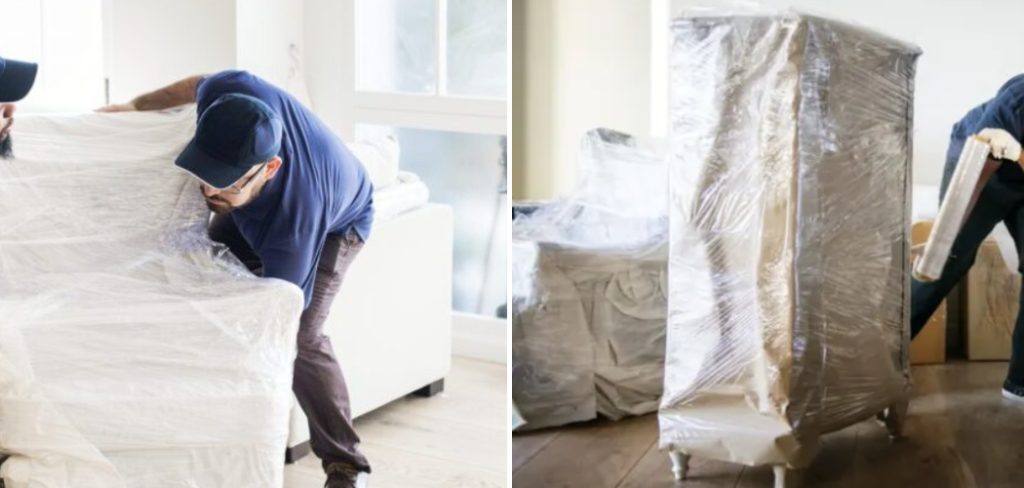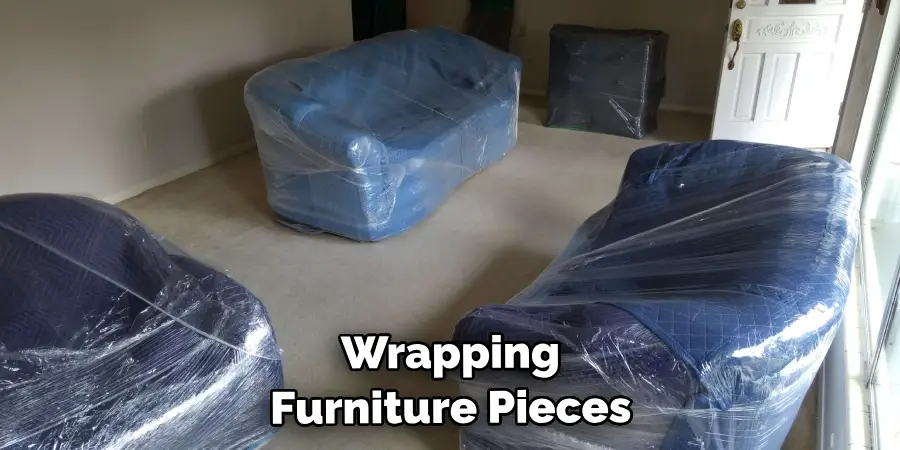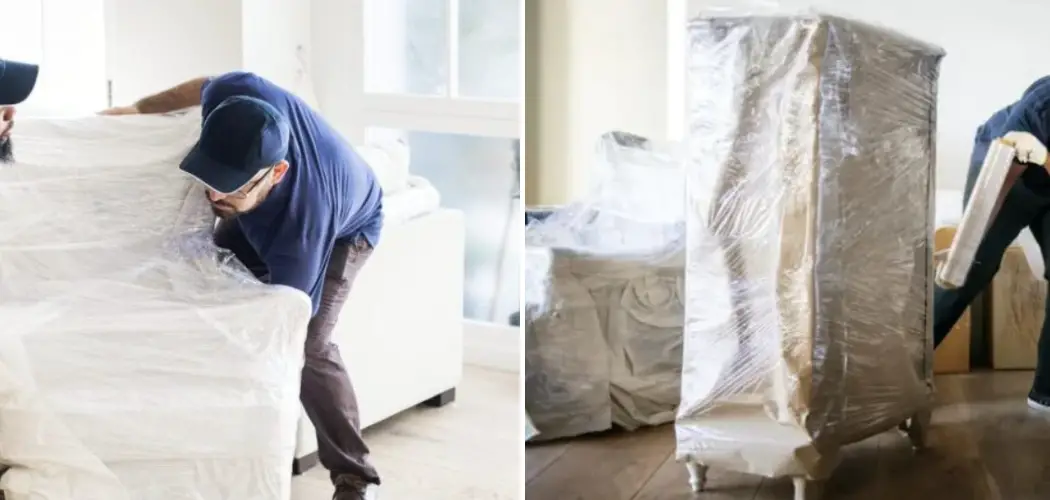Storing a couch in a storage unit is the best way to protect your furniture from dirt, dust, and other environmental elements. It also frees up valuable space in your home or office. Additionally, when done correctly, it can help your couch last longer and maintain its value over time.

There are many advantages to storing a couch in a storage unit. One of the biggest benefits is providing extra security for your furniture and belongings. By keeping them safely tucked away in a self-storage facility, you can know that your beloved furniture will be safe from theft or damage. In this blog post, You will learn how to store a couch in a storage unit.
Step-by-Step Processes for How to Store a Couch in a Storage Unit
Step 1: Inspect the Couch
Before packing up a couch for storage, inspect it. Check for any tears or rips in the fabric and look over the frame. Ensure there are no signs of damage before attempting to move the piece into storage.
Step 2: Measure the Couch
Once you have inspected your couch, measure it. This will help when choosing a storage space – you can ensure your chosen unit will be large enough for your couch. Measure the width, height, and depth of the frame and the cushions.
Step 3: Choose a Suitable Storage Space
Once you have all of your measurements, choose an appropriate storage space. Look for a space that is large enough to accommodate the size of your couch. Consider features such as climate control to help protect your furniture from moisture or extreme temperatures.
Before storing a couch, it is important to clean it. Vacuum any dirt and debris from the fabric, then use an upholstery cleaner to remove spills or stains. Allow plenty of time for the couch to dry before packing it in storage.

Step 4: Wrap the Couch for Protection
To protect the couch during storage, wrap it in a dust cover or furniture pad. Be sure to use a material that will not damage the fabric and secure it securely with packing tape. This will help keep dirt and dust from settling on your furniture in storage.
Step 5: Move the Couch into Storage
Once your couch is wrapped, it can be moved into storage. If you need assistance moving the piece, contact a professional moving company for help. Place the couch in its new storage space carefully and ensure it is secure before leaving.
Following these steps, you can properly store a couch in a storage unit. This will help keep your furniture safe and in good condition while away.
Precautions for How to Store a Couch in a Storage Unit
- When moving a couch to a storage unit, it is important to use the proper protective materials before placing it in the unit. Wrapping furniture pieces with furniture wraps or blankets will help protect them from dirt and moisture while in storage.
- Before storing your couch, be sure to clean it thoroughly. This will help ensure your couch is free from any dirt or debris that may damage it while in storage.
- When storing a couch, lift it off the ground and place it on furniture risers or pallets so air can circulate underneath it. This will help protect your furniture from moisture and pests while in storage.
- Preparing the couch for storage is key. You can use furniture pads or tie-down straps to keep the pieces in place and stable while in storage.
- Ensure that your storage unit is well-ventilated with plenty of air circulation to help prevent mold, mildew, and other types of damage to your furniture while in storage.
- Store your couch away from direct sunlight in a cool, dry environment. This will help maintain the color and fabric of your furniture over time.
- Lastly, inspecting your storage unit periodically for any signs of moisture or pest activity that may have caused damage to your furniture while in storage is important. If you detect any signs of damage, take the necessary steps to help protect your furniture from further damage.

Following these precautions will help ensure your couch is stored safely and properly in a storage unit. This will help protect your couch from dirt, moisture, pests, mold, mildew, and other damage over time.
What is the Best Way to Prepare a Couch Before Storing It in a Storage Unit?
Before storing a couch in a storage unit, properly preparing the furniture for safe storage is important. To ensure your sofa is ready for self-storage, follow these steps:
- Clean and vacuum the surface and cushions of the couch thoroughly. This will help keep dust or dirt from settling into the fabric while in storage.
- Disassemble the furniture as much as possible. This will make it easier to transport and store in the storage unit. Remove any cushions, legs, or other detachable pieces so you can stack them safely in the storage unit and maintain good airflow for ventilation.
- Cover your couch with a plastic sheeting or breathable furniture cover. Plastic will help protect your couch from dust, dirt, and moisture while in storage. Place the covered couch on wooden pallets to keep it off the ground and away from any dampness that may be present.
- Place your sofa in an area of the storage unit with good air circulation but only a little direct sunlight. Temperature and humidity fluctuations can damage furniture, so ensure your sofa is not in an area of the storage unit with extreme temperatures or too much moisture.
Following these steps will help keep your couch safe and protected while in storage at any time. For extra protection, consider investing in a climate-controlled storage unit to ensure your furniture is stored in the ideal environment.
How Long Can a Couch Be Stored in a Storage Unit?
The length of time you can store a couch in a storage unit depends on the conditions of the storage unit and how well your couch is protected. If the storage unit is climate controlled, meaning it has temperature and humidity regulation, you can store your couch for an extended period without worry of damage. However, if the storage unit lacks these features, you should only store your couch temporarily.
If you are storing a couch in an outdoor storage unit, cover it with a tarp or other protective covering to keep off any rain or moisture. This will help protect the material from damage due to dampness and mold growth. You should also ensure any fabric portions of the couch are vacuumed before being stored in the unit, as this will help prevent dust or dirt from settling into the fibers. Storing a couch for longer than six to eight months is only recommended if the storage unit is climate controlled.
Are Any Risks or Hazards Associated With Storing a Couch in a Storage Unit?
Certain risks and hazards must be considered When storing a couch in a storage unit. For instance, if the couch is made of fabric or leather, it can become damaged if exposed to direct sunlight for extended periods. Also, pests such as mice and cockroaches may choose to make the couch their home. Considering these risks before storing a couch in a storage unit is important.

It is also important to ensure that the storage unit is suitable for storing furniture. The humidity and temperature of the storage unit should be considered, as fluctuations in either could cause mold or mildew growth on the couch over time. Additionally, if the storage space has inadequate ventilation, it could increase moisture and humidity, which may damage the couch. To ensure that a couch is stored safely in a storage unit, it should be wrapped securely with plastic sheets or furniture covers. This will help protect the couch from any pests or dust particles entering the unit.
How Should You Protect the Floor of Your Storage Unit When Storing a Couch?
When storing a couch in a storage unit, it is important to consider the potential damage caused by the furniture’s weight. To prevent scratches and gouges on your storage unit floors, placing some type of padding or cushioning underneath your furniture is recommended. This could include traditional felt pads, foam sheets, plywood panels, or cardboard boxes. Additionally, you should avoid dragging the furniture across the floor of your storage unit to minimize potential damage.

It is also beneficial to store large pieces of furniture on a pallet or similar platform. This can provide extra stability and reduce the pressure that would otherwise be placed on the floors of your storage unit. When selecting a pallet or other item to raise the couch, ensure it is constructed from a material that will not cause damage. Finally, be sure to inspect the floor of your storage unit before and after you move in your furniture. This will help identify any significant surface irregularities or damage that may have occurred during the moving process.
Conclusion
In conclusion, storing a couch in a storage unit can be done effectively and safely if you take the proper precautions. Measure your couch before selecting a storage unit so that it will fit, and then choose a climate-controlled unit if possible. It is also important to thoroughly clean the fabric of your couch before placing it in storage, as this will help to ensure that mold, mildew, or other contaminants do not build up while in storage.
Finally, wrap the couch in furniture pads and plastic wrap and secure it with straps to prevent any damage during transport. This article has been beneficial for learning how to store a couch in a storage unit. Make Sure the precautionary measures are followed chronologically.


